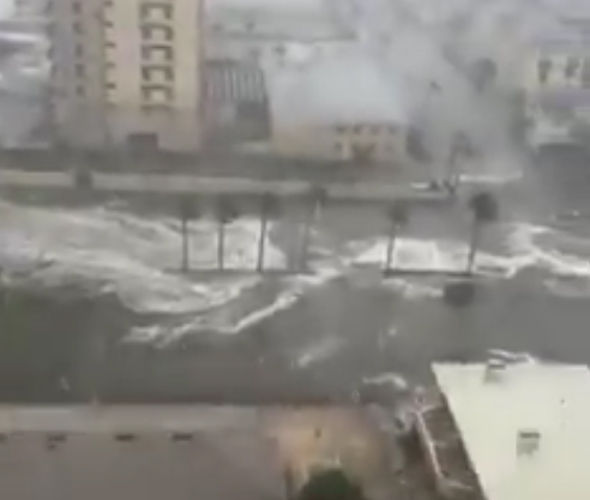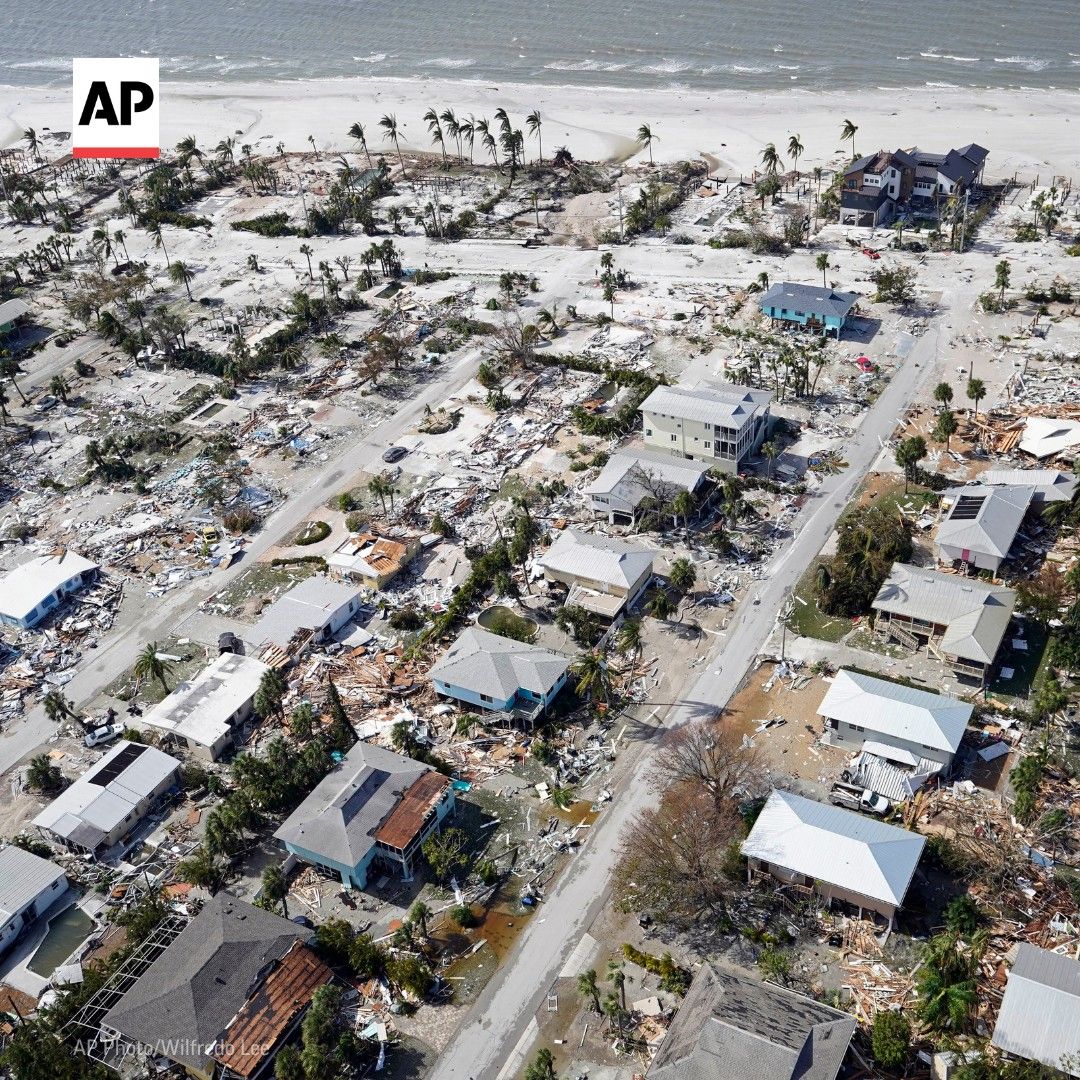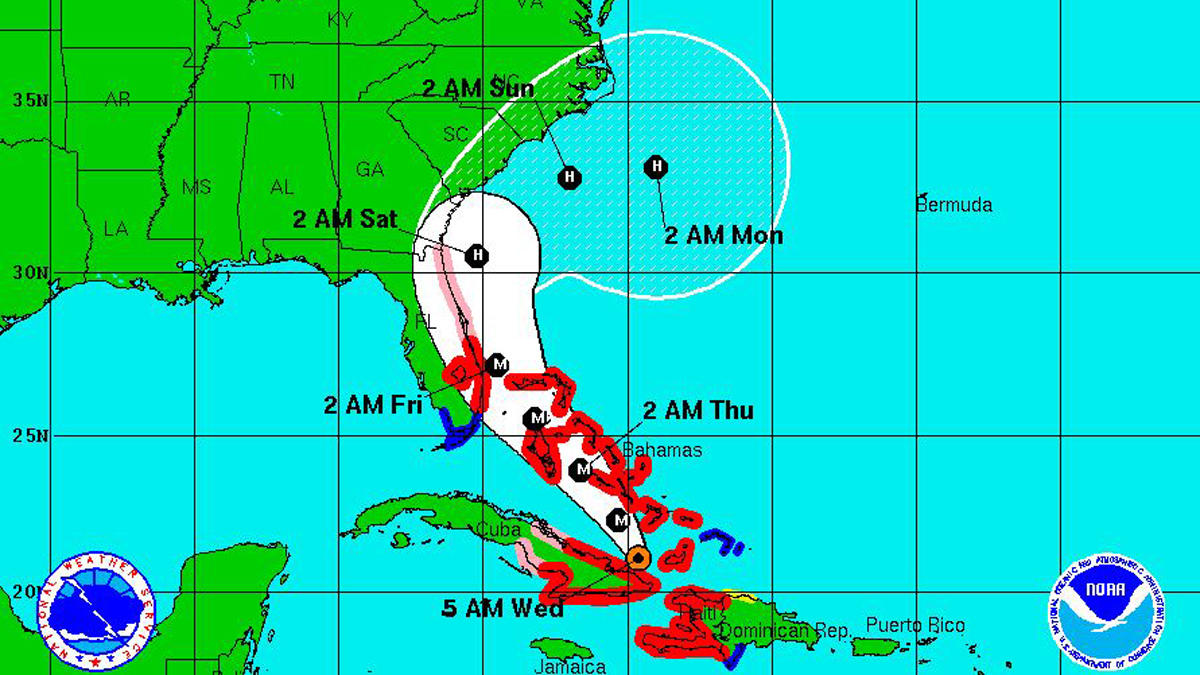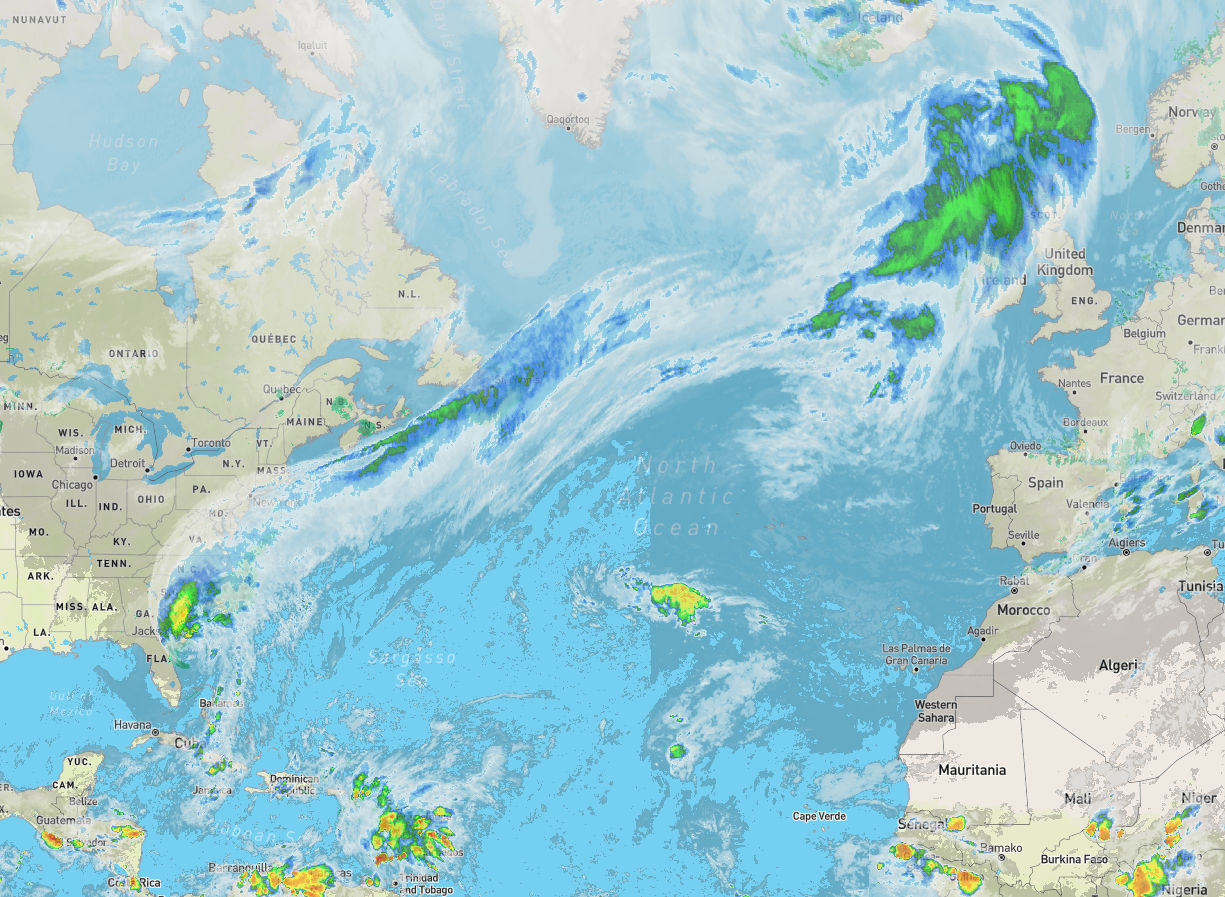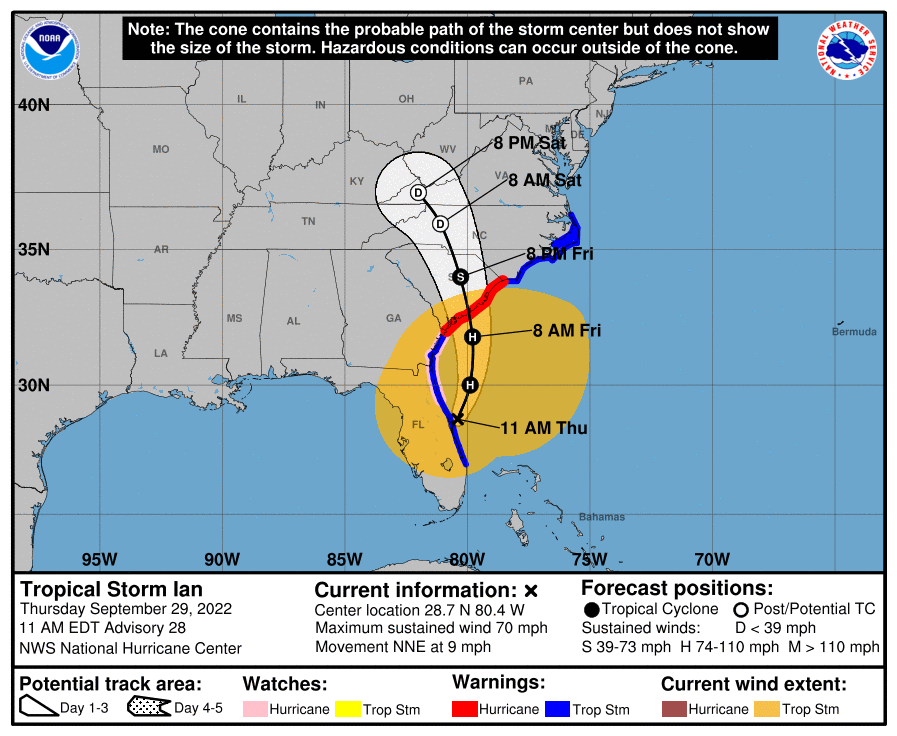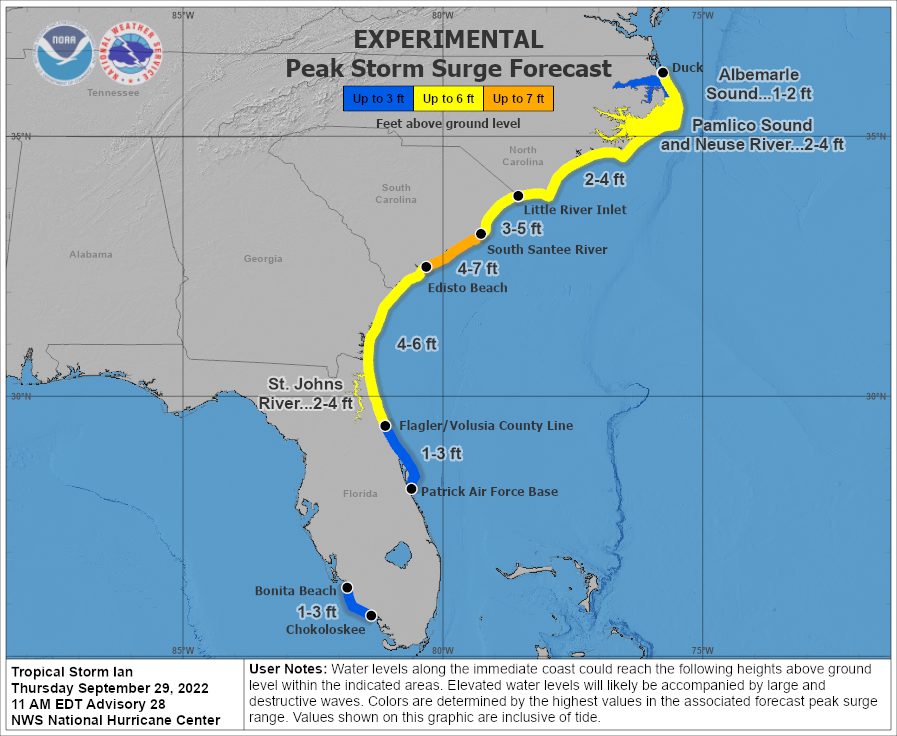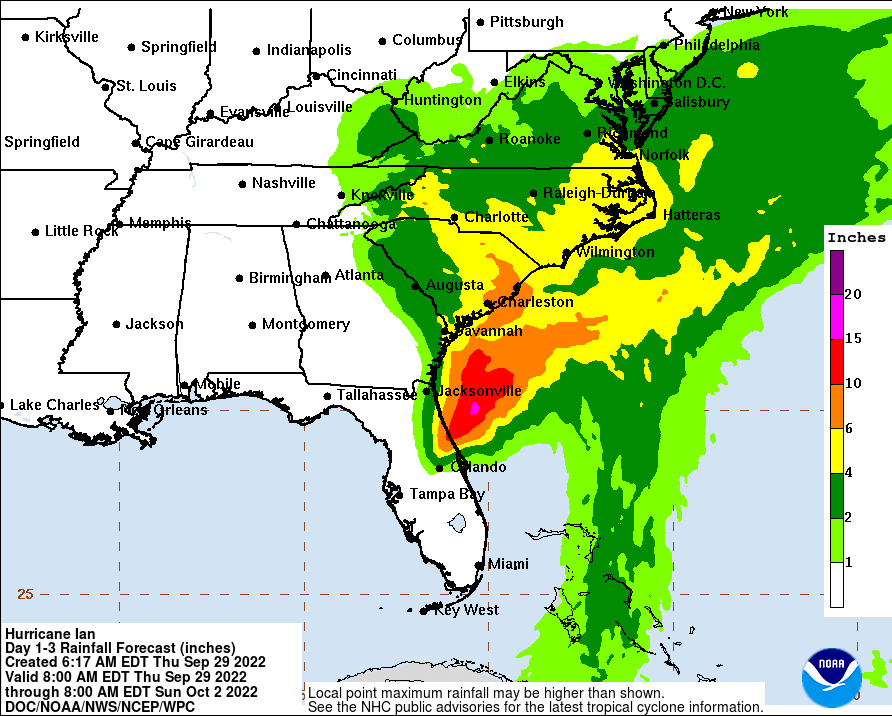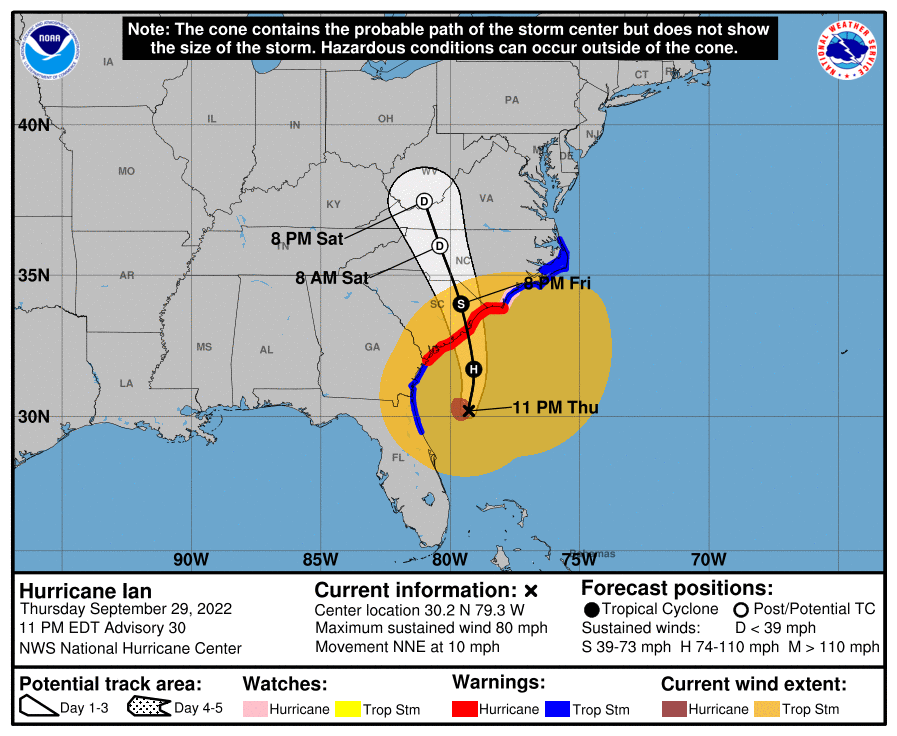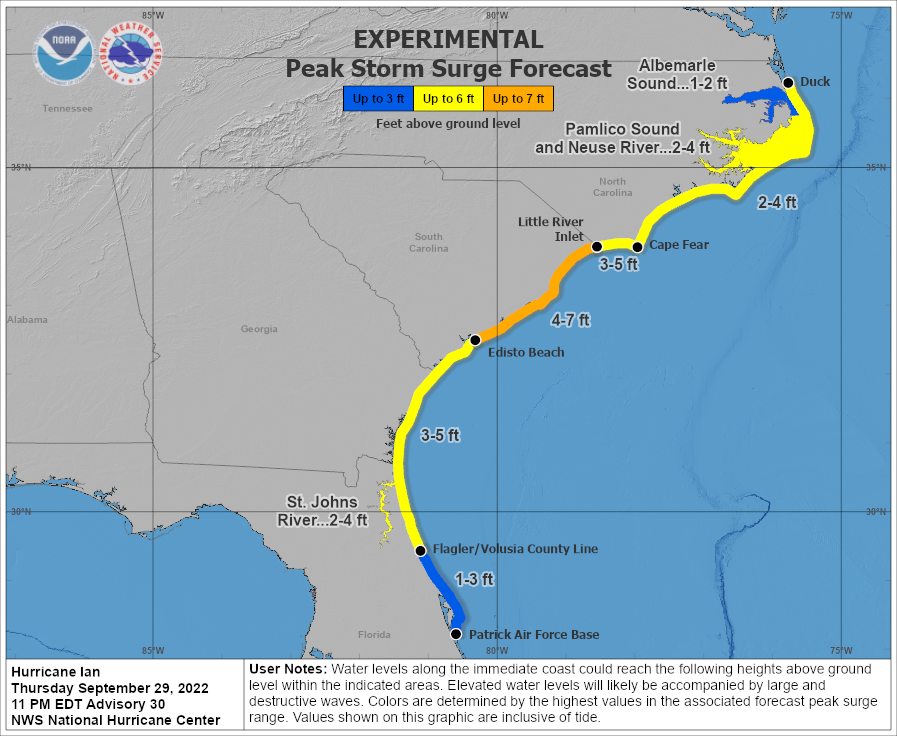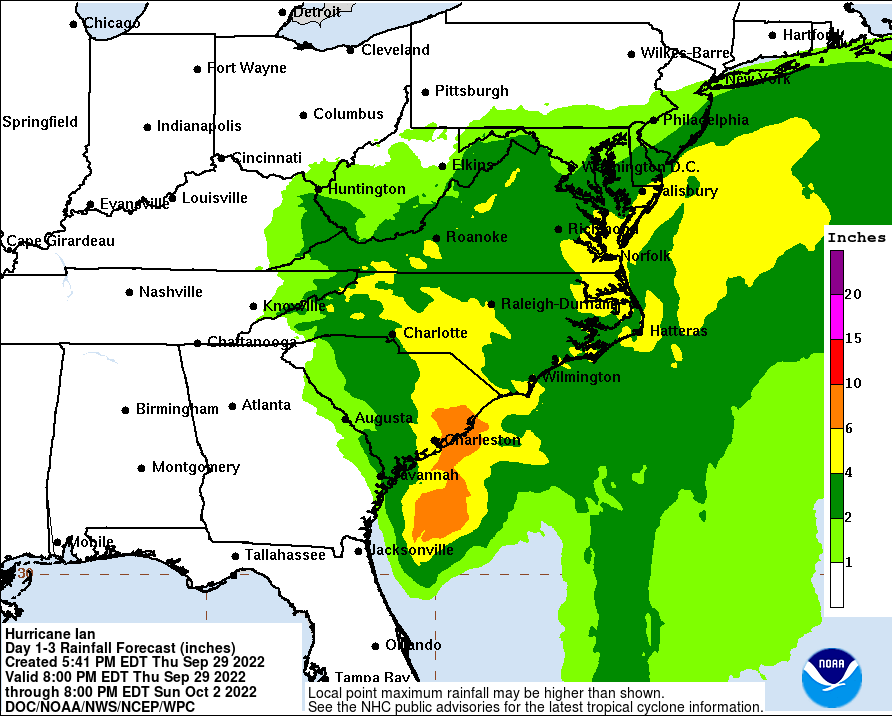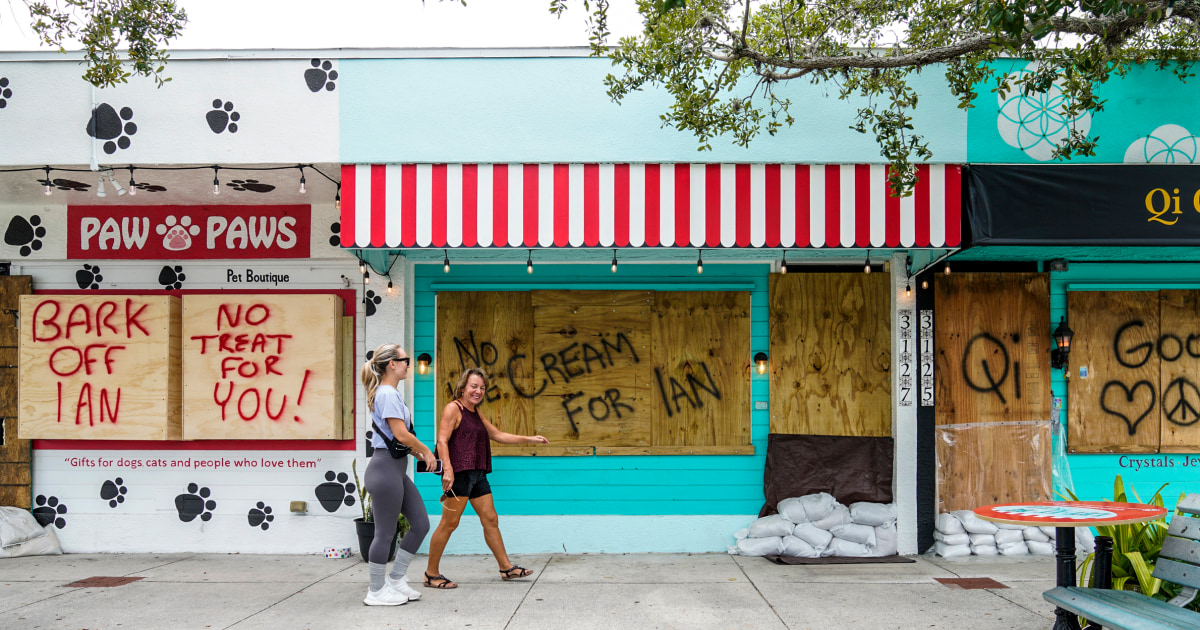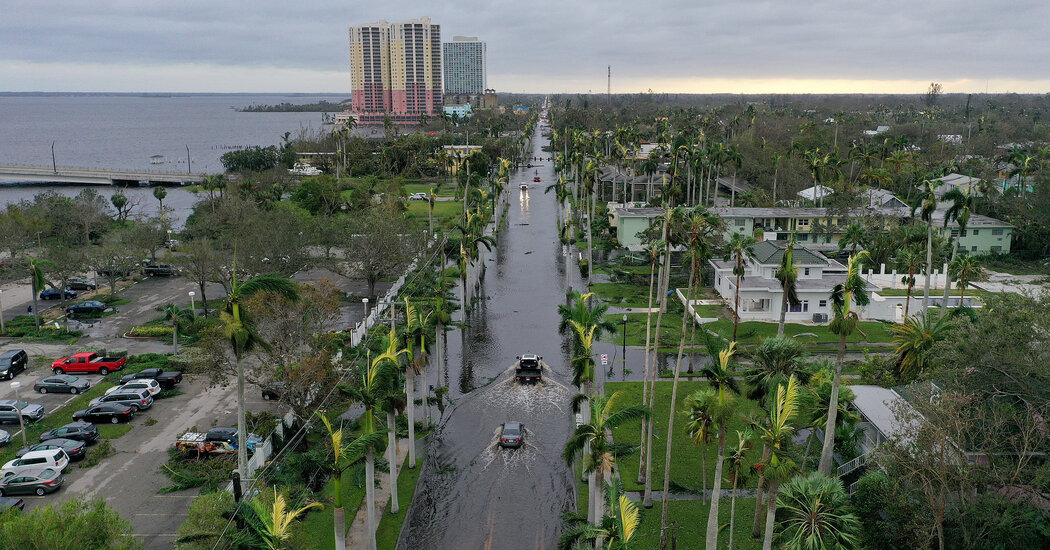Well, got back from my late night at the Borgata in the wee hours and just woke up; was at least able to keep up with events last night via my phone and this thread and the one on AmericanWx. Crazy day and night for Florida - hopefully the death toll isn't too high - 5 confirmed deaths as of now, but unfortunately that number is expected to go up, perhaps considerably, given the number of desparate 911 calls received that couldn't be responded to in the midst of the storm. Not going to rehash what has gone on so far, but figured an update on Ian's forecast from here on was in order.
Ian
Ian Impacts
Well, got back from my late night at the Borgata in the wee hours and recently woke up; was at least able to keep up with events last night via my phone and this thread and the one on AmericanWx. Crazy day and night for Florida - hopefully the death toll isn't too high - 5 confirmed deaths as of now (first link below), but unfortunately that number is expected to go up, perhaps considerably, given the number of desperate 911 calls received that couldn't be responded to in the midst of the storm.
https://www.telegraph.co.uk/world-n...ida-latest-news-tracker-tropical-storm-path1/
Between the incredible storm surges from about Englewood down to Marco Island and the 10-20" of rain through a wide swath of central Florida, mostly along and NW of the track (Tampa to Orlando to Daytona for example), the flooding has just been catastrophic for so many. In addition, of course, the incredible winds near landfall and even inland, as Ian weakened very slowly (possibly due to the "brown ocean effect" discussed last night) brought devastation to many, as did the 100+ small tornadoes observed. Given all that and the over 2 million "customers" (so likely 4-5 million people) without power in FL, Ian is likely to become the most expensive hurricane in history. Not going to rehash, in detail, what has gone on so far, although the 2nd link has some excellent videos on the impact from all over Florida and the 3rd link has a nice overview of storm impacts.
https://www.wpbf.com/article/videos-hurricane-ian/41433985#
https://www.nytimes.com/live/2022/09/29/us/hurricane-ian-florida
Ian Forecast:
Since Ian moved more quickly across Florida than expected and with a further SE than forecast track, this means the "starting point" for Ian's next phase is as a stronger storm (spent ~12 hours less over land) which will head further north. This means that Ian still has 70 mph winds as it has emerged north of Cape Canaveral (vs. yesterday's forecast of north of Daytona late Thursday night) and is now expected to become a hurricane with 75-80 mph winds as it curves towards another landfall around Charleston Friday morning (vs. yesterday's forecast of near Savannah as a 50 mph TS).
Looking ahead, Ian is expected to continue heading NE for a bit, but to then bend back NW towards Charleston, given interactions with the approaching trough/front along the SE US - this interaction has also led to Ian becoming somewhat of a "hybrid" cyclone with a combination of tropical and non-tropical characteristics, especially the large swaths of precipitation well to the NW of the storm (more like a cold core low pressure system), which will continue, bringing heavy rains well inland of its track and into the mid-Atlantic.
Ian will NOT regain strength beyond Cat 1, like it had, but still a Cat 1 hurricane is going to have significant impacts to the SE coast with storm surges in the 3-5/4-7 foot range, which could lead to substantial flooding, especially to the NE of the track (so Charleston should hope for the track to be NE of the city which would provide offshore winds, greatly reducing surge). While there will be some wind damage along the coast, by far, the greatest threat is the surge damage. There will also likely be 4-8" rainfall amounts in much of SC/NC along the coast and somewhat inland as Ian dissipates in western NC by Saturday, which will lead to some inland flooding. Several inches of rain are also likely up through VA/MD/DE and possibly even 1-2" in our area, especially near the coast.
FORECAST POSITIONS AND MAX WINDS
INIT 29/1500Z 28.7N 80.4W 60 KT 70 MPH
12H 30/0000Z 30.0N 79.9W 65 KT 75 MPH
24H 30/1200Z 31.8N 79.8W 65 KT 75 MPH
36H 01/0000Z 34.0N 80.3W 45 KT 50 MPH...INLAND
48H 01/1200Z 35.9N 81.1W 30 KT 35 MPH...POST-TROP/EXTRATROP
60H 02/0000Z 37.0N 82.0W 15 KT 15 MPH...POST-TROP/EXTRATROP
72H 02/1200Z...DISSIPATED

